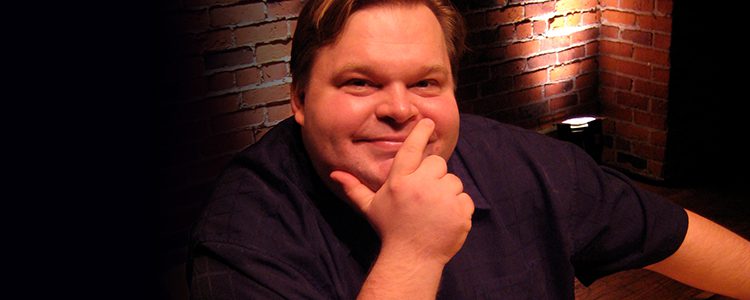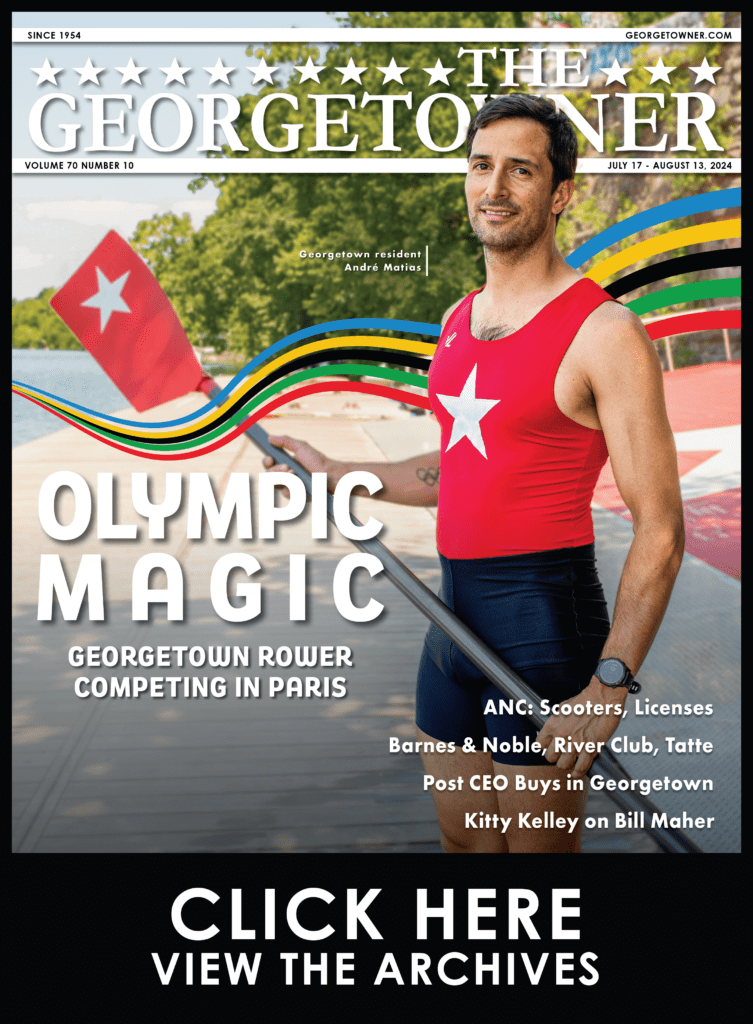Mike Daisey’s ‘The Story of the Gun’
By • July 30, 2018 0 730

Mike Daisey is back in town.
This bit of news might raise a few hackles here and there, but not so much here in Washington, where the often controversial, always engaging, monologist-as-sometime-trickster is mostly well received and popular.
Daisey was last seen in Washington shortly before Donald Trump’s seismic presidential victory with his “The Trump Card” at Woolly Mammoth Theatre Company, which functions practically as a home field for him. Two of his one-man shows, with one table, one chair and many glasses of water — “The Last Cargo Cult” and the controversial “The Agony and the Ecstasy of Steve Jobs” — had already played to great effect at Woolly, D.C.’s church of edgy, often political theater.
Over the years, with mixed results, Daisey, in his biting, acerbic, sometimes scathingly funny and always surprising approach to theater, has tackled politics, the digital age and its discontents and theater its own self. What’s he bringing to town this time?
The title alone should be revealing and telling, but then again not. It’s “The Story of the Gun.” Oh boy, one might want to say. Here we go. Not “Guns.” Or “A Gun.” Or even something spiffy like: “The Dichotomy, Paradox and Pathology of Guns in American Culture.” No. It’s “The Story of the Gun.”
The show opens tomorrow, July 31, and has already been extended through Aug. 9.
So what can we expect from “The Story of the Gun”? Probably not what you’d expect.
“There probably will be people who expect to hear stories of the latest mass shootings, or statistics about shootings in Chicago or other cities,” Daisey said in a phone interview last weekend. “That’s not what I’m getting at here.”
The project was actually commissioned in 2003 in the wake of the intrinsically horrible Sandy Hook shootings by Joe Haj, then the artistic director of Playmakers in North Carolina. It has had productions in North Carolina, New York, Seattle and Chicago. Haj (now at the Guthrie in Minneapolis) and Daisey wanted to approach guns and violence differently.
“People tend to approach the subject of guns in terms of the physical or actual details of the most recent event or shootings. It’s a statistical and in-the-moment reaction to the events, the victims, the shooter, the numbers.
“I wanted to take a different route,” Daisey said. “I wanted to do a different take on this. I wanted to go beyond the last event, or particular events, or basic information about guns, type of guns and so on. I wanted to delve into the role of guns in American history, the context, the origins. This is not a debate about gun control between one side or the other. It’s not a gun control polemic. This is about guns in America.”
You can expect, then, that there will not be a lot of talk about the shooter and shootings in Las Vegas, or in Colorado, or Detroit, or, locally and more recently, the shootings of journalists working for the daily newspaper in Annapolis, nor perhaps even about the pros and cons of the Second Amendment, which may be a disappointment for attendees armed for a political shouting match.
“I don’t think that’s likely to happen in the theater,” Daisey said. “People who go to the theatre, here or elsewhere, are somewhat more liberal than most people, and they have different expectations when it comes to the theatre. I see myself as a theater person, I’m an actor and a performer.”
He’s a little more than that. The style appears to be static in that he doesn’t wander around the stage much, gesticulating or finger-pointing, but there’s something both interesting, prickly and challenging about the persona. Onstage, gulping down water, he has the timing of a stand-up comic down pat, but he’s also and often quite suddenly intense, bent on driving home a point he’s carefully built so that it comes a little like a shock.
On the phone, he’s quieter, even more thoughtful, as if ruminating about the question and his answer, even with an obvious one as “Do you own a gun?” (to which the answer is no). But he seems to be thinking about it, so that when, asked about the first time he handled a gun, he was asked if he liked handling a gun, the answer — “Yes … yes, I did” — seemed to carry a little more weight.
What Daisey is interested in here it seems is the very presence of “the gun” and its uses in America. To do that — and listening to him as he does that — you have to think about the presence of guns in America.
We live in a country and a time when there are almost as many guns as there are people in America. They are omnipresent and always have been. They are overwhelmingly present in our popular literature — Zane Grey’s cowboy novels reportedly were President Dwight Eisenhower’s favorite reading material — and most of my generation grew up in the 1950s playing cowboys and Indians, shooting cap guns.
Daisey is fascinated about all things technological. “I’m interested in consequences of technology. And guns offered Europeans who settled America and the ruling society of the United States a decided advantage.
“Slavery could not have been sustained and maintained without guns. And it was guns which were part of a genocide of native populations. And guns play a large part in our political imagination, in our cultural imagination, not just in wars, but in films, television, games and so on. During the Depression, the bank robbers and their tommy guns became folk heroes.”
This being a Daisey project, every night is likely to be different. “I want to impart something that can be taken out of the theatre and planted as a seed. We can’t just stay in the matrix of events. Deadly things — guns — can feel good to people, even people who don’t have one. With millions of guns already in the country, they’re not going to disappear.”

